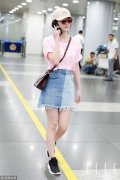Update Time:2018-08-09Click:273

At the intersection of fashion and technology, a new era is unfolding – an era where digitalization stands as the principal driver of change. The fashion industry, traditionally rooted in tangibility, is now stepping into the limitless realm of the digital world. This digital revolution is reshaping the industry, from manufacturing processes to marketing strategies and consumer experiences.
A dive into the recent evolution of manufacturing methods in fashion unveils a world increasingly defined by digital technologies. In a strive for efficiency, sustainability, and customization, brands are turning to advanced tools such as 3D printing, Computer-Aided Design (CAD), and Artificial Intelligence (AI). These technologies help minimize waste and accelerate the turnaround time from design to final product, ultimately redefining the production landscape.
Digitalization is also stirring up a wave of innovation in fabric creation, with advanced wearables gaining momentum. These new-age textiles, embedded with sensors and digital interfaces, can transform garments into interactive pieces that communicate with the wearer and their environment. Anywhere from mood-sensitive color-changing clothing to fitness trackers integrated into apparel, digital fashion is pushing the envelope of what is wearable.
Beyond the production lines, digitalization is also revolutionizing the marketing and sales avenues in fashion. Social media platforms and influencers have emerged as robust marketing channels, with brands harnessing their reach to connect with a global audience. Not merely focusing on selling products, these channels allow brands to tell their stories, engage in conversations, and build a community around their identity.
E-commerce has further solidified its footprint in the industry. Online shopping is no longer a mere convenience but a preferred retail model for many, amplified by global situations like the COVID-19 pandemic. This has accelerated brands' adoption of digital showrooms, virtual fitting rooms, and advanced customer-service tech like chatbots. AI is also predicted to play a key role in personalized marketing, studying customer data and shopping habits to provide improved customized experiences.
The digital revolution has also paved the way for immersive online shopping through Augmented Reality (AR) and Virtual Reality (VR). These technologies can grant consumers virtual experiences that come close to or even surpass traditional in-store shopping. The try-before-you-buy approach can be transformed; imagine trying on a hundred different outfits without taking a single step, changing room not required.
One of the most exciting phenomena in digital fashion is the advent of digital clothing — garments that exist solely in the digital realm. As we spend more and more time in virtual social spaces, the concept of digital-only clothing offers an environmentally-friendly alternative for fast-fashion trends. Brands can release digital versions of their collections, allowing buyers to outfit their online avatars, or even to digitally dress in these pieces in photos or videos.
Sustainability emerges as a clear beneficiary of digital practices in fashion. With decreased physical production, the resulting carbon footprints are significantly lower. Digital showrooms and catalogs save tons of paper, water, and energy. In an industry often criticized for its environmental impact, these changes present a crucial stride towards sustainability.
Despite promising advantages, digital fashion is not without challenges. Concerns about data protection, online fraud, and technological glitches pose substantial risks. Digital divide and accessibility are also significant factors to consider. Ensuring inclusivity and broader access remains a critical task as we move towards this new horizon.
In this symbiosis of style and technology, one thing is clear: we are standing at the threshold of a fashion revolution. A revolution that reflects the demands of the modern world and adapts to its rapid pace. As digitalization continues to permeate more aspects of the industry, the fashion world we know is bound to transform, making way for a future that is as stylish as it is smart.

Exploring the Role of Influencers in Shaping Fashion Trends

Exploring Women's Fashion Styling

2024’s Top Fashion Trends: An Exclusive Look

Women's Fashion Styling: Comfort vs Style

Women's Fashion Styling: Fabric Types Used

Men's Fashion Styling: Importance of Fit

Exploring Men's Fashion Styling

Denim Decode Tracing the Ever-Evolving

Designer Spotlight Profiles of the Top Trendsetters in Fashion

Digitalization in Fashion The Next Big Revolution